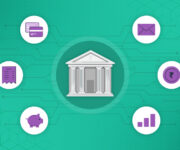The rapid pace of open banking adoption has the potential to revolutionise the financial sector in India. Driven by fintech solutions, it emerged an innovative way for consumers to share their banking data with third parties, driving innovation, convenience, and value.
However, due to its reliance on information technology, cybersecurity risks are inherent in open banking systems. As a matter of concern, a new study shows that 53% of consumers perceive it as dangerous, especially when sharing data.
Financial services are well known for their vulnerability to cybercrime. But the question is, with increasing cyber attacks in the banking industry that can cost up to $18.3 million on average, can open banking achieve a solution?
In this article, we will discuss several cybersecurity threats the system faces, which must be addressed to ensure its safety. Let’s take a moment to learn more about the topic first.
What Does Open Banking Signify?
As noted above, open banking involves sharing banking data with third-party financial services providers.
Simply put, banks enable customers to share their financial data with third parties seamlessly. This allows customers to access a range of valuable services, such as comparison tools, budgeting apps, and other financial services.
For example, a budgeting app can access customers’ account data and transactions to generate a budget recommendation.
Also, if the customer wants to use a comparison tool to find the best savings account, they can share their data securely with the tool, which will help generate tailored results for the customer.
Some Major Advantages of Open Banking
Open banking mainly caters to consumer needs. However, businesses, banks, financial institutions, and consumers- all stakeholders in the financial ecosystem can benefit from data sharing. For example:
-
Easier Access to Financial Data
Open banking allows customers easier access to their financial data and enables them to share it with third-party applications through secure APIs. This allows customers to take advantage of more comprehensive financial services and products.
-
Improved Financial Literacy
It also encourages financial literacy by giving customers more information about their financial activities. Customers can use this information to make better-informed financial decisions.
-
Improved Security
Open banking ensures customer data is protected using secure APIs and authentication methods. It brings more cohesion to the financial data-sharing processes in a safe environment.
-
Increased Innovation
Furthermore, it provides a platform for innovation, as third-party applications can use customer data to create innovative products and services. This encourages new ideas in the banking industry.
3 Common Risks Involved with Open Banking
Here’s a snapshot of some notable challenges:
1. Data Breaches
Data breaches are the most severe risks associated with open banking. If the APIs of third-party providers do not meet security requirements, data breaches may occur, affecting both the consumer and the bank with which the data was shared.
2. Application Vulnerabilities
Vulnerabilities in a third-party company’s web or mobile application could also allow hackers to enter and engage in fraudulent activity, such as requesting fictitious payments or posing as a single user.
3. Inadequate Digital Hygiene
Many are unaware of how their password choices affect data security. Most data breaches were due to compromised credentials and weak passwords. As a result, 81% of cyberattacks target users who use weak or repeated passwords.
Which Cybersecurity Factors Are Crucial for Open Banking?
With more and more financial institutions adopting open banking, it is essential to understand the cybersecurity considerations that must be taken into account when implementing this type of service. A few of them are as follows:
1. Data Security
The first and most important consideration is data security. Open banking requires sharing of sensitive financial data between the customer and the bank. This data must be protected from unauthorised access or misuse.
Banks should implement a comprehensive security framework that includes encryption, authentication, and access control. They must also be able to quickly detect and respond to any security threats or breaches.
2. User Authentication
Another consideration is user authentication. Banks must ensure that customers can securely authenticate their identity and access the bank’s services. It should include multi-factor authentication (MFA) and identity verification. Banks should also ensure they can detect unauthorised access promptly and keep customer data safe.
3. Government Regulations and Compliance
Another major factor can be compliance with government regulations. In open banking, financial institutions must operate within the premise of the laws of their regulatory body. This includes the regulations which set out the rules for open banking. Also, to protect customer data, banks must comply with all the necessary regulations.
4. Infrastructure Inadequacies
Finally, banks must consider the implications of open banking in their existing IT infrastructure, where they can integrate with new technologies and services, which can significantly impact the security of those systems in the long term.
Banks should ensure that their IT infrastructure is secure and that any new services or technologies are appropriately tested and secured.
Final Thoughts
The use of open banking is on the rise in India. According to a report, it recorded a 611% growth in customer accounts, from 180 million in September 2021 to 1.1 billion in August 2022.
In order to provide the most effective customer experience, banks must address cybersecurity concerns such as user authentication, creating a safe financial ecosystem, and a robust infrastructure.
Today, many financial institutions are increasingly collaborating with fintech companies to reduce cybersecurity risks, including dual-factor authentication, encryption, and access control. It can be an innovative way for customers to access various financial services, including budgeting, saving, and investing.
Finezza is also one such powerful fintech tool that uses innovative technology to process and analyse customers’ bank statements. It automatically extracts key data points and runs them through analytics algorithms to provide meaningful insights.
Finezza can help by providing users with secure access to their financial data and offering a wide range of services tailored to their needs. Our suite of APIs and services makes creating safe, compliant and reliable open banking applications easy.
Get in touch with us today!




Leave a Reply